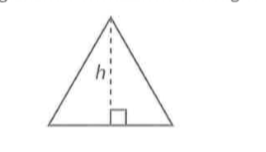If 3 charges are placed at the vertices of equilateral triangle of charge 'q' each. What is the net potential energy, if the side of equilateral Δ is lcm ?
14πε0q2l
14πε02q2l
14πε03q2l
14πε04q2l
The correct Answer is:C
To find the net potential energy of three charges placed at the vertices of an equilateral triangle, we can follow these steps:
Step 1: Understand the Configuration
We have three charges, each of charge q, placed at the vertices of an equilateral triangle with side length l.
Step 2: Calculate the Potential Energy Between Each Pair of Charges
The potential energy U between two point charges q1 and q2 separated by a distance r is given by the formula:
U=kq1q2r
where k is Coulomb's constant, k=14πϵ0.
In our case, since all charges are equal and placed at the vertices of the triangle, the potential energy between any two charges (say q and q) separated by distance l is:
U12=kq⋅ql=kq2l
Step 3: Calculate the Total Potential Energy
Since there are three pairs of charges in the triangle (1-2, 2-3, and 3-1), the total potential energy Unet is the sum of the potential energies of these pairs:
Unet=U12+U23+U31
Since each pair has the same potential energy:
Unet=3⋅U12=3⋅kq2l
Step 4: Substitute the Value of k
Now, substituting the value of k:
Unet=3⋅(14πϵ0)q2l
Thus, we can write:
Unet=3q24πϵ0l
Final Result
The net potential energy of the system of three charges is:
Unet=3q24πϵ0l
We have three charges, each of charge q, placed at the vertices of an equilateral triangle with side length l.
The potential energy U between two point charges q1 and q2 separated by a distance r is given by the formula:
U=kq1q2r
where k is Coulomb's constant, k=14πϵ0.
U12=kq⋅ql=kq2l
Since there are three pairs of charges in the triangle (1-2, 2-3, and 3-1), the total potential energy Unet is the sum of the potential energies of these pairs:
Unet=U12+U23+U31
Since each pair has the same potential energy:
Unet=3⋅U12=3⋅kq2l
Now, substituting the value of k:
Unet=3⋅(14πϵ0)q2l
Thus, we can write:
Unet=3q24πϵ0l
The net potential energy of the system of three charges is:
Unet=3q24πϵ0l
Topper's Solved these Questions
- ELECTROSTATIC POTENTIAL AND CAPACITORSBOOK - DC PANDEY ENGLISHCHAPTER - ELECTROSTATIC POTENTIAL AND CAPACITORSEXERCISE - Check point 2.4
15 Videos
- ELECTROSTATIC POTENTIAL AND CAPACITORSBOOK - DC PANDEY ENGLISHCHAPTER - ELECTROSTATIC POTENTIAL AND CAPACITORSEXERCISE - Check point 2.5
20 Videos
- ELECTROSTATIC POTENTIAL AND CAPACITORSBOOK - DC PANDEY ENGLISHCHAPTER - ELECTROSTATIC POTENTIAL AND CAPACITORSEXERCISE - Check point 2.2
15 Videos
- ELECTROMAGNETIC WAVESBOOK - DC PANDEY ENGLISHCHAPTER - ELECTROMAGNETIC WAVESEXERCISE - Sec C
22 Videos
- ELECTROSTATICSBOOK - DC PANDEY ENGLISHCHAPTER - ELECTROSTATICSEXERCISE - Medical entrances gallery
37 Videos
Similar Questions
Three identical point objects each of mass m are placed at the vertices of an equilateral triange of side l. What is the gravitational potential at the centre of the equilateral triangle due to the point masses?
View SolutionThree equal charges of 5.0μC each are placed at the three vertices of an equilateral triangle of side 5.0cm each. Calculate the electrostatic potential energy of the system of chages.
View Solution
Knowledge Check
Consider the charges q,q and -q placed at the vertices of an equilateral triangle of each side l. What is the force on each charge ?
Aq24√2πε0l2B−q24πε0l2Cq24πε0l2Dzero
Construct an equilateral triangle of sides 6 cm each.
View SolutionFind the perimeter of an equilateral triangle of side 13 cm.
View SolutionThree charges 2q,−q,and−q are located at the vertices of an equilateral triangle. At the center of the triangle,
View SolutionFind the altitude of an equilateral triangle of side 8 cm.
View SolutionFind the area of an equilateral triangle whose side is a cm.
View SolutionEach side of the equilateral triangle shown is 2. What is the height h of the triangle?

View SolutionFind the area of an equilateral triangle having each side 4 cm.
View Solution
